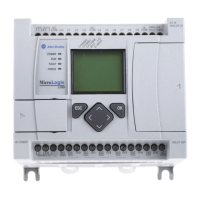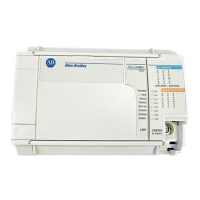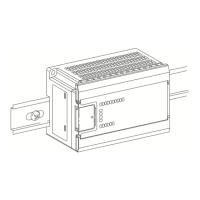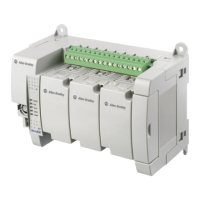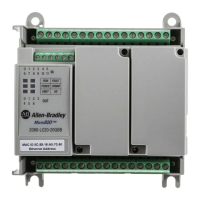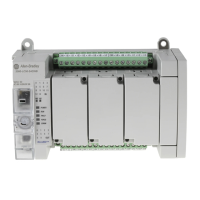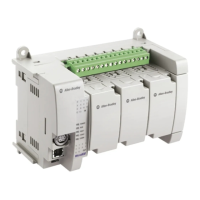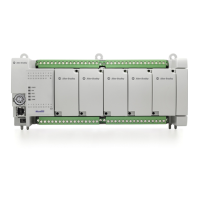214 Rockwell Automation Publication 1766-UM001I-EN-P - June 2015
Appendix E Connecting to Networks via RS-232/RS-485 Interface
(8000 ft.). For additional information on connections using the AIC+, refer to
the Advanced Interface Converter (AIC+) User Manual, publication 1761-6.4.
Planning Cable Routes
Follow these guidelines to help protect the communication cable from electrical
interference:
• Keep the communication cable at least 1.52 m (5 ft.) from any electric
motors, transformers, rectifiers, generators, arc welders, induction
furnaces, or sources of microwave radiation.
• If you must run the cable across power feed lines, run the cable at right
angles to the lines.
• If you do not run the cable through a contiguous metallic wireway or
conduit, keep the communication cable at least 0.15 m (6 in.) from AC
power lines of less than 20 A, 0.30 m (1 ft.) from lines greater than 20 A,
but only up to 100K VA, and 0.60 m (2 ft.) from lines of 100 K VA or
more.
• If you run the cable through a contiguous metallic wireway or conduit,
keep the communication cable at least 0.08 m (3 in.) from AC power lines
of less than 20 A, 0.15 m (6 in.) from lines greater than 20 A, but only up
to 100 K VA, and 0.30 m (1 ft.) from lines of 100 K VA or more.
Running the communication cable through conduit provides extra
protection from physical damage and electrical interference. If you route
the cable through conduit, follow these additional recommendations:
– Use ferromagnetic conduit near critical sources of electrical
interference. You can use aluminum conduit in non-critical areas.
– Use plastic connectors to couple between aluminum and ferromagnetic
conduit. Make an electrical connection around the plastic connector
(use pipe clamps and the heavy gauge wire or wire braid) to hold both
sections at the same potential.
– Ground the entire length of conduit by attaching it to the building
earth ground.
– Do not let the conduit touch the plug on the cable.
– Arrange the cables loosely within the conduit. The conduit should
contain only serial communication cables.
– Install the conduit so that it meets all applicable codes and
environmental specifications.
For more information on planning cable routes, see Industrial Automation Wiring
and Grounding Guidelines, publication 1770-4.1.
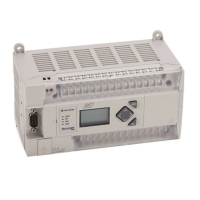
